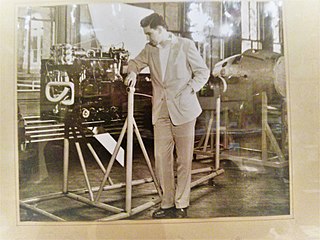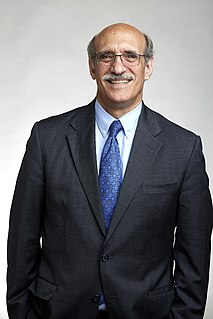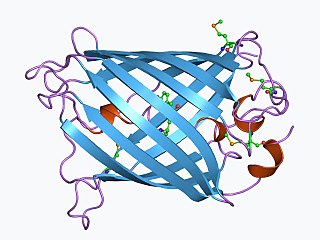
Oregon Health & Science University (OHSU) is a public university in Oregon with a main campus, including two hospitals, in Portland, Oregon. The institution was founded in 1887 as the University of Oregon Medical Department and later became the University of Oregon Medical School. In 1974, the campus became an independent, self-governed institution called the University of Oregon Health Sciences Center, combining state dentistry, medicine, nursing, and public health programs into a single center. It was renamed Oregon Health Sciences University in 1981 and took its current name in 2001, as part of a merger with the Oregon Graduate Institute (OGI), in Hillsboro. In addition, the university has several partnership programs including a joint PharmD Pharmacy program with Oregon State University in Corvallis.
Alfred J. Lewy, a.k.a. "Sandy Lewy", graduated from University of Chicago, in 1973 after studying Psychiatry, Pharmacology and Ophthalmology. He is a full professor and Vice-Chair of the department of Psychiatry at OHSU, Oregon Health & Science University, and holds an MD and PhD. Prior to moving to Oregon in 1981, Lewy was at the National Institute of Mental Health (NIMH) in Bethesda, Maryland, working with senior colleague Thomas Wehr. In Oregon he has worked closely with Robert L. Sack. As of December 2005, he had 94 publications available on Pubmed.
Charles Howard Vollum was an American engineer, scientist, and philanthropist in Oregon, United States. He was the co-founder of Tektronix Corporation, and endowed the Vollum Institute.

David S. Eisenberg is an American biochemist and biophysicist best known for his contributions to structural biology and computational molecular biology. A professor at the University of California, Los Angeles since the early 1970s and director of the UCLA-DOE Institute for Genomics & Proteomics since the early 1990s, as well as a member of the California NanoSystems Institute (CNSI) at UCLA.
The OGI School of Science and Engineering, located in Hillsboro, Oregon, United States was one of four schools at the Oregon Health and Science University (OHSU). Until June 2001, it functioned independently as a private graduate school, the Oregon Graduate Institute of Science & Technology (OGI). OGI operated four departments and had approximately 330 students. In 2008, the school's name was changed to the Department of Science and Engineering and by 2010, the department was dissolved and the academic programs and research were disseminated to other OHSU institutes and departments.
Jennifer S. Lerner is an experimental social psychologist known for her research in emotion and decision theory. She is the first psychologist in the history of the Harvard Kennedy School to receive tenure. At Harvard, her titles include Professor of Public Policy and Management, Professor of Psychology, Faculty Director in the Graduate Commons Program, Co-Founder of the Harvard Decision Science Laboratory and Co-Director of the Harvard Faculty Group on Emotion, Decision Making, and Health. Her research interests also include: the effects of accountability on judgment and choice and a broad range of psychology applications to policy problems especially in decisions involving health, national security, and economic prosperity. An award-winning teacher, she founded and directs the Leadership Decision Making program within Harvard Kennedy School's executive education program.
Professor Michael Cowley FTSE is an Australian physiologist. He is best known for his mapping of the neural circuits involved in metabolism and obesity and diabetes treatment. He is a professor in the Department of Physiology at Monash University in the Faculty of Biomedical and Psychological Sciences. He is also a Director of the Australian diabetes drug development company, Verva Inc, and Director of the Monash Obesity & Diabetes Institute] (modi).

Brian J. Druker is a physician-scientist at Oregon Health & Science University, in Portland, Oregon. He is the director of OHSU's Knight Cancer Institute, Jeld-Wen Chair of Leukemia Research, and professor of medicine. In 2009, he won the Lasker-DeBakey Clinical Medical Research Award and the Meyenburg Award for his influential work in the development of Imatinib, commonly known as Gleevec, for the treatment of chronic myeloid leukemia (CML). He has been called "Oregon's best-known scientist".
Giuseppe (Joseph) Dominic Matarazzo is an American psychologist and a past president of the American Psychological Association (APA). He chaired the first medical psychology department in the United States and has been credited with much of the early work in health psychology.

The Oregon Graduate Center was a unique, private, postgraduate-only research university in Washington County, Oregon, on the west side of Portland, from 1963 to 2001. The Center was renamed the Oregon Graduate Institute in 1989. The Institute merged with the state medical college in 2001, and became the OGI School of Science and Engineering within the medical college. The School was discontinued in 2008 and its campus in 2014. Demolition of the campus buildings began February 2017.
Francisco Bezanilla is a Chilean-American scientist and professor at the University of Chicago. He is a member of the National Academy of Sciences.

Alfred Inselberg is an American-Israeli mathematician and computer scientist based at Tel Aviv University.
Leonid Kruglyak is a scientist focusing on evolutionary genetics and is chair of the department of human genetics at the David Geffen School of Medicine at the University of California Los Angeles.
Jodi Ann Lapidus is a professor of biostatistics and director of biostatics education at Oregon Health & Science University (OHSU).
John C. Crabbe, Jr. is an American neuroscientist and behavior geneticist. He is a professor of behavioral neuroscience at the Oregon Health & Science University (OHSU) School of Medicine, where he has worked since 1979. He is also a senior research career scientist at the Veterans Affairs Medical Center in Portland, Oregon. He is also the former director of OHSU's Portland Alcohol Research Center.

John Frederick Matthews Grassle was an American marine biologist, oceanographer, professor, and distinguished research scientist, notable for early work on the communities associated with deep-sea hydrothermal vents, and for his involvement in the creation of the Census of Marine Life and the first integration of marine biological data on a global scale, the Ocean Biogeographic Information System.
Eric Gouaux is an American biochemist and biophysicist who holds the Jennifer and Bernard Lacroute Term Chair at the Vollum Institute at the Oregon Health & Science University.
Beverly M. Emerson is an Emeritus Professor of Biological Sciences at the Salk Institute for Biological Studies who uncovered details about how cancer becomes drug resistant. She is currently at the Oregon Health & Science University’s Knight Cancer Institute. She is a Fellow of the American Association for the Advancement of Science.










